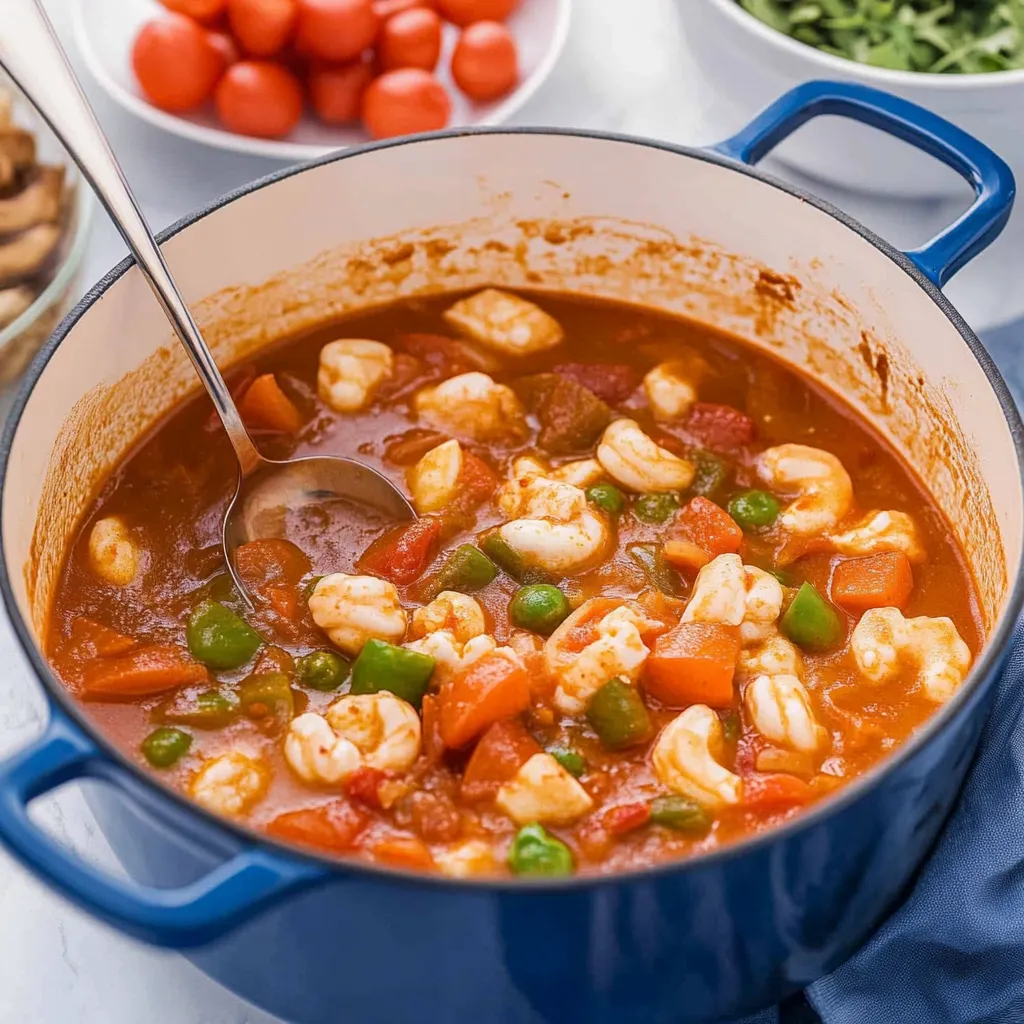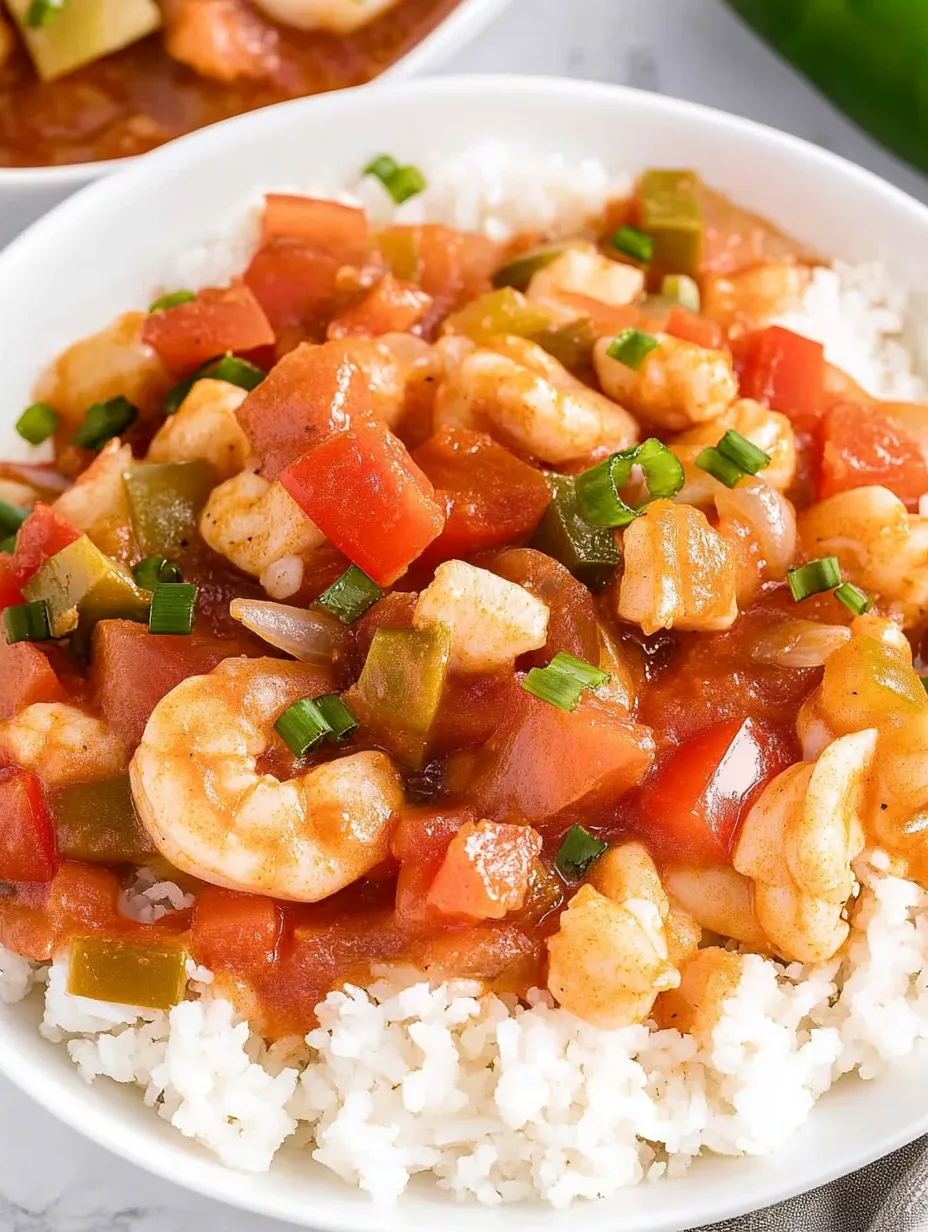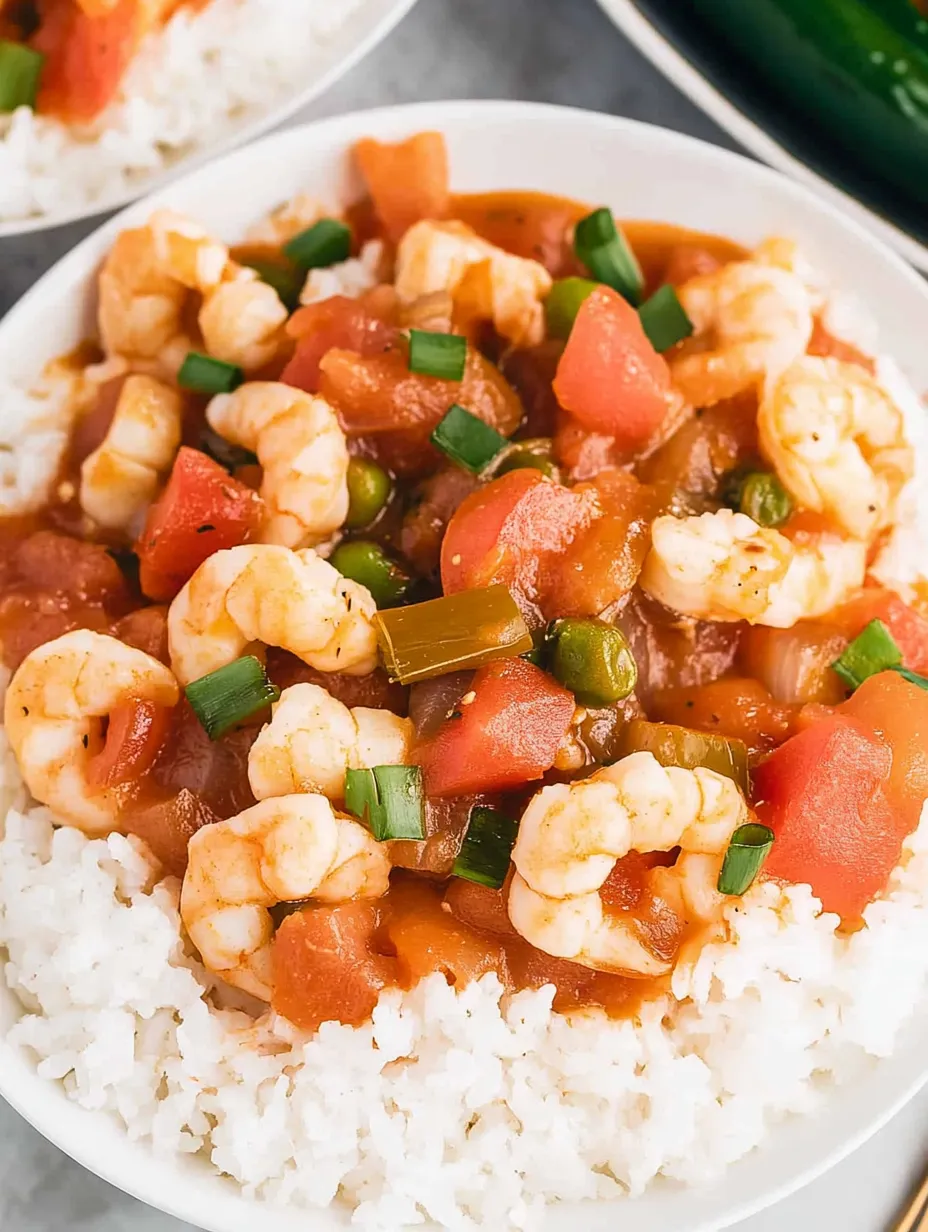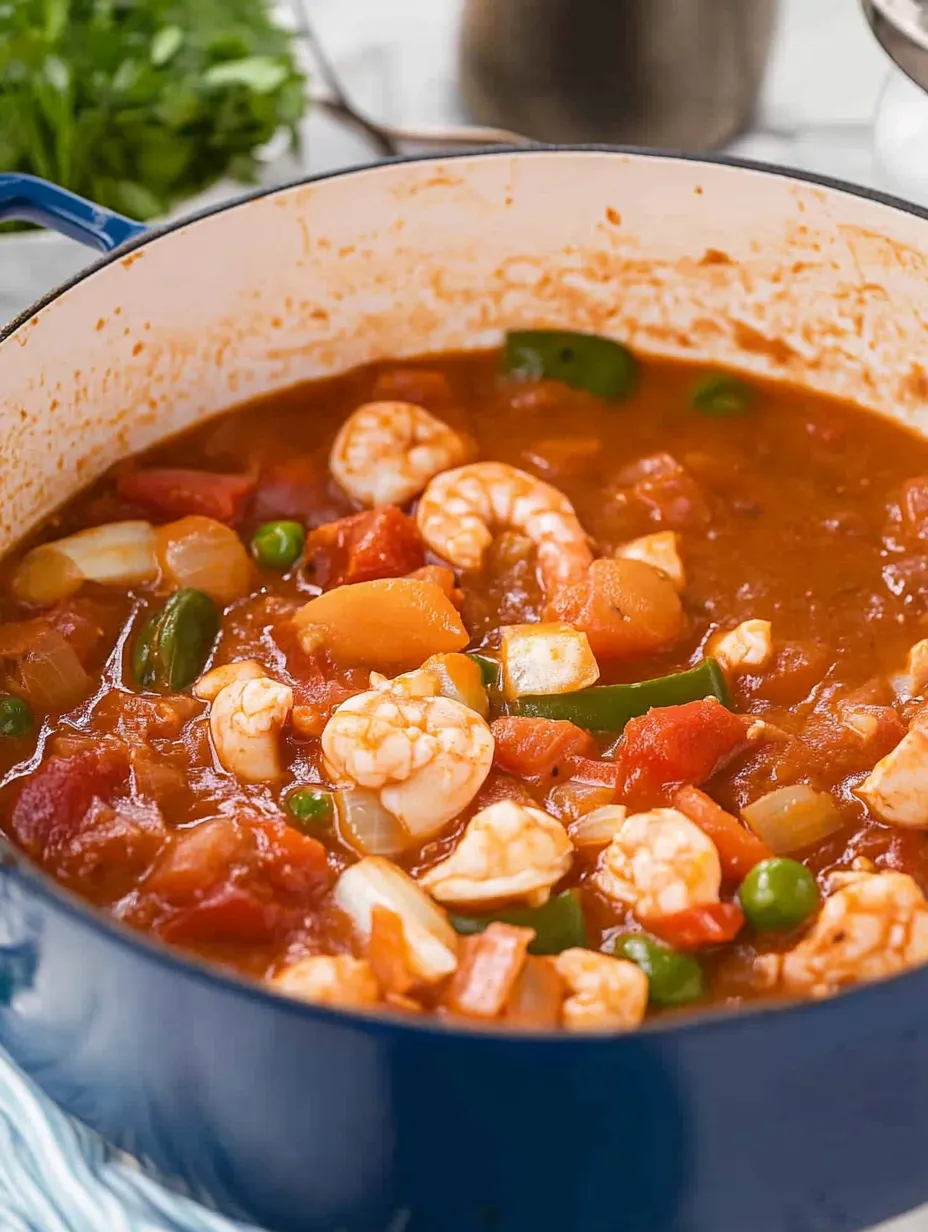 Pin it
Pin it
Shrimp Creole embodies everything wonderful about Louisiana cooking - bold flavors, comforting warmth, and that perfect balance between simplicity and sophistication. This classic dish combines plump, juicy shrimp with a rich, spicy tomato sauce that practically sings with Creole seasoning. The vibrant red sauce studded with tender pink shrimp creates a visual feast that promises satisfaction before you even take your first bite.
My first attempt at Shrimp Creole came after visiting New Orleans years ago. I was determined to recreate that unforgettable flavor at home, and after several attempts, this version became my family's standard request whenever we crave a taste of Louisiana. Even my seafood-skeptical teenager asks for seconds when this hits the table.
Fresh Seafood Selection
Perfect Shrimp Selection
- Large or jumbo shrimp: Provide substantial bites that stand up well to the robust sauce
- Fresh shrimp: Should smell like the ocean with firm texture and translucent appearance
- Peeled and deveined shrimp: Save preparation time while maintaining excellent flavor absorption
Foundation Ingredients
- Sweet onions: Deliver natural sweetness that balances the acidic tomatoes perfectly
- Green bell peppers: Add traditional flavor and subtle crunch essential to authentic Creole cuisine
- Fresh garlic cloves: Provide aromatic depth that powdered versions simply cannot match
Flavor Builders
- Cayenne pepper: Introduces characteristic Louisiana heat that can be adjusted to preference
- Cornstarch: Creates silky sauce texture without flour heaviness or extended cooking time
- Quality canned tomatoes: Offer consistent flavor regardless of season or availability
 Pin it
Pin it
I learned through experimentation that letting the vegetable base cook until properly softened creates the foundation for everything that follows. My grandmother always insisted that rushing this step was the downfall of many otherwise promising Creole dishes. Taking the extra five minutes truly transforms the final result.
Cooking Methodology
Aromatic Foundation
Begin with quality unsalted butter melted in a large, heavy-bottomed saucepan over medium heat. Add finely diced sweet onion, chopped green bell pepper, and minced fresh garlic. Sauté this mixture patiently for about 10 minutes, stirring occasionally until onions become translucent and peppers soften noticeably. This slow cooking process releases natural sweetness while building essential flavor.
Sauce Development
Incorporate cayenne pepper, crushed red pepper flakes, and salt into the vegetable mixture, stirring to coat evenly. Add canned diced tomatoes with their juices and sprinkle cornstarch over the mixture. Stir continuously while bringing the sauce to a gentle boil, ensuring cornstarch dissolves completely without clumping. The sauce should begin thickening slightly as it reaches temperature.
Seafood Introduction
Reduce heat to medium-low creating a gentle simmer. Add cleaned, raw shrimp to the sauce, folding carefully to maintain shrimp integrity while ensuring even coating. Cover the pan to trap moisture and heat, allowing shrimp to cook through. Monitor carefully for 6-10 minutes until shrimp turn completely pink and opaque, indicating perfect doneness.
Perfect Presentation
Prepare a bed of fluffy white rice as the ideal foundation for serving. Spoon generous portions of shrimp and sauce over rice, allowing the grain to absorb the flavorful liquid. Garnish with freshly sliced green onions for color contrast and bright flavor. Serve immediately while components remain at peak temperature and texture.
Final Enhancements
Provide additional hot sauce tableside for heat enthusiasts seeking extra spice. Consider offering lemon wedges for brightness that cuts through the rich sauce. Crusty bread serves beautifully for capturing every last drop of sauce from plates and bowls.
My aunt Jenny visited from Mississippi and tasted my version, declaring it reminded her of Sunday suppers from childhood. She mentioned that good Creole cooking should taste complex despite using simple ingredients, which happens when each component receives proper attention during preparation.
 Pin it
Pin it
Did you know tomatoes weren't always central to Creole cooking? Early versions used different base ingredients until Sicilian immigrants brought their tomato-loving culinary traditions to New Orleans in the late 1800s. This cultural fusion created the dish we recognize today, demonstrating how American regional cuisines often developed through immigrant influences. When I cook this recipe, I appreciate how it represents centuries of cultural exchange distilled into one delicious bowl.
Magnificent Accompaniments
Traditional Pairings
Fluffy white rice provides the classic foundation for Shrimp Creole, allowing its robust sauce to shine. Warm, crusty French bread serves perfectly for capturing every flavorful bite. Consider hush puppies or cornbread as Southern-inspired alternatives that complement the main dish beautifully while adding textural contrast.
Vibrant Vegetables
Balance the rich main course with simple green vegetables like steamed asparagus or sautéed green beans. A crisp side salad dressed with light vinaigrette refreshes the palate between bites of spicy shrimp. For authentic New Orleans influence, serve fried okra or collard greens seasoned with a touch of vinegar.
Beverage Selections
Cold sweet tea offers traditional Southern refreshment against the dish's spiciness. For adult gatherings, consider chilled Sauvignon Blanc or light-bodied Pinot Noir that won't overpower the delicate shrimp flavor. A classic Sazerac or Hurricane cocktail provides authentic New Orleans spirits for special occasions.
Remarkable Variations
Protein Alternatives
Transform this dish by substituting chicken thighs cut into bite-sized pieces for versatility beyond seafood. Allow slightly longer cooking time to ensure proper doneness. Andouille sausage slices added alongside shrimp create a hybrid dish reminiscent of jambalaya with distinctive smoky flavor. Crawfish tails provide authentic Gulf Coast flavor when available seasonally.
Vegetable Enhancements
Incorporate diced celery to create the Cajun holy trinity base alongside onions and bell peppers. Add okra during the final cooking stage for traditional thickening and distinctive Southern flavor. Consider fire-roasted tomatoes instead of standard diced varieties for subtle smokiness that enhances complexity.
Heat Customizations
Adjust spice levels by manipulating cayenne quantities rather than eliminating it completely to maintain authentic flavor profiles. Add a dash of smoked paprika for complexity without increasing heat significantly. Include a splash of hot sauce like Crystal or Tabasco during cooking for dimension beyond simple pepper heat.
Proper Preservation
Cooling Techniques
Allow leftover Shrimp Creole to cool completely before refrigeration to prevent condensation that would water down the sauce. Store sauce and rice separately whenever possible to maintain optimal texture of both components. Use shallow containers rather than deep bowls to promote faster, safer cooling.
Refreshing Leftovers
Gently reheat refrigerated Shrimp Creole in a covered saucepan over medium-low heat, adding tablespoons of water if needed to restore original consistency. Stir occasionally but gently to prevent breaking the shrimp into fragments. Enhance refreshed leftovers with additional fresh herbs or a squeeze of lemon juice to brighten flavors.
Freezing Guidelines
Freeze only the sauce portion without shrimp for best quality upon thawing, then add fresh shrimp when reheating. Use freezer-safe containers with minimal air space to prevent freezer burn development. Label containers with both contents and date to ensure timely consumption within three months.
 Pin it
Pin it
I learned through years of preparing this dish that patience creates the difference between good and exceptional results. The vegetables need enough time to develop their flavors before adding tomatoes. My cooking mentor always said, "You can rush to get dinner on the table, or you can create a meal worth remembering." This Shrimp Creole falls into the latter category when given the proper attention to detail. The rich sauce develops complexity that simply cannot be rushed, rewarding those who allow the process to unfold naturally. When friends request my secret ingredient, I simply tell them it's taking the time to build flavors layer by layer, respecting the tradition behind this beloved dish.
Frequently Asked Questions
- → How spicy is this dish?
- Medium-hot with 1 tsp cayenne. Reduce or omit for a milder version.
- → Can I use frozen shrimp?
- Yes, thaw completely before adding to the sauce.
- → What can I serve besides rice?
- Try cauliflower rice, quinoa, or crusty bread for dipping.
- → How do I store leftovers?
- Refrigerate up to 2 days. Reheat gently to prevent tough shrimp.
- → Can I add other vegetables?
- Celery, okra, or corn make great additions to this flexible recipe.
